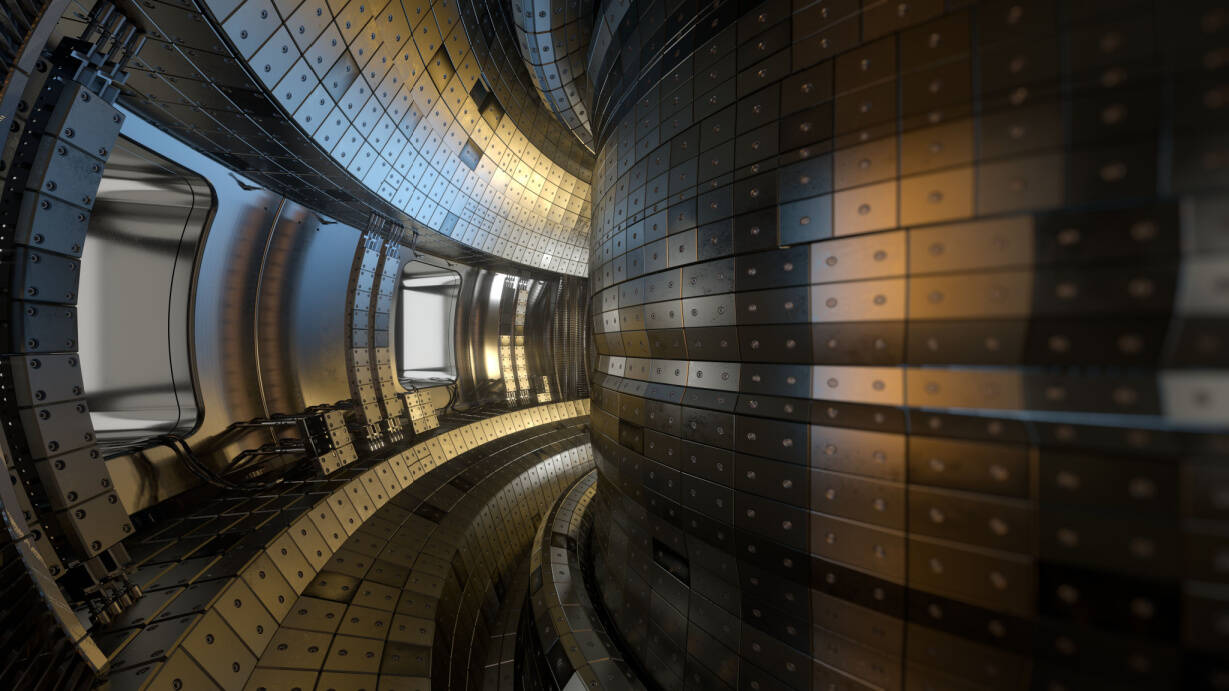Scientists at the UK Atomic Energy Authority (UKAEA) claim they have taken a significant step toward making fusion energy possible by applying a 3D magnetic field to counteract instabilities in a spherical tokamak plasma for the first time.
Working on the Mega Amp Spherical Tokamak (MAST) Upgrade experiment at Culham in Oxfordshire, the UKAEA researchers used magnetic coils to apply the 3D magnetic field and stabilize the plasma.
In a fusion reaction, energy is produced by forcing light atomic nuclei, such as hydrogen, to fuse together to form heavier particles. Some of their mass is lost in the process, converted into a large amount of energy.
To achieve this, the fuel needs to be confined at very high temperature within the tokamak to create a plasma, and this is difficult to control. If it becomes unstable, it can reduce performance or even damage the tokamak itself.
Maintaining plasma stability is one of fusion’s key challenges, and one reason for the old joke that fusion power is 30 years away – and always will be.
In general, a tokamak is a doughnut-shaped enclosure, but MAST adopts a more spherical form, “more like a cored apple,” as its name suggests.
According to the UKAEA scientists, their latest advance is in dealing with what they call edge localized modes (ELMs), instabilities that occur at the edge of a plasma cloud and could cause damage to the inner parts of a future fusion power plant.
The claimed first is in using resonant magnetic perturbation (RMP) coils, which apply a small 3D magnetic field at the plasma edge, to demonstrate complete suppression of ELMs within the MAST Upgrade machine.
“Suppressing ELMs in a spherical tokamak is a landmark achievement. It is an important demonstration that advanced control techniques developed for conventional tokamaks can be successfully adapted to compact configurations to develop the scientific basis for future power plants like STEP, the Spherical Tokamak for Energy Production,” said UKAEA’s head of MAST Upgrade Science, James Harrison.
STEP is a prototype fusion energy reactor, planned for construction on the site of a former coal power station in Nottinghamshire, which the UK government allocated an additional £2.5 billion ($3.35 billion) in funding to earlier this year.
The researchers say they demonstrated another first – that they can independently control the plasma exhaust in the upper and lower divertors in MAST Upgrade, without impacting the performance or density of the plasma in the main chamber.
These divertors direct particles and heat ejected from the plasma onto surfaces within the tokamak. Managing this exhaust is another key fusion challenge, and UKAEA claimed the ability to independently control the upper and lower divertors in a tokamak is another step toward ensuring the practicality of future power plant operations.
In the latest round of experiments, the team also achieved the best plasma shape ever recorded on the machine, with an elongation of 2.5, meaning the plasma height is 2.5 times its width. This is a positive development, we are told, and will be a key target for future fusion power plants.
The Culham Campus where the UKAEA facility is sited was also designated as the UK government’s first “AI Growth Zone” earlier this year. While these are intended to attract investment in AI-enabled datacenters and supporting infrastructure, Culham’s role appears to be to develop fusion energy so the country stands a chance of powering all those bit barns – what some others are calling high-tech “white elephants.” ®

